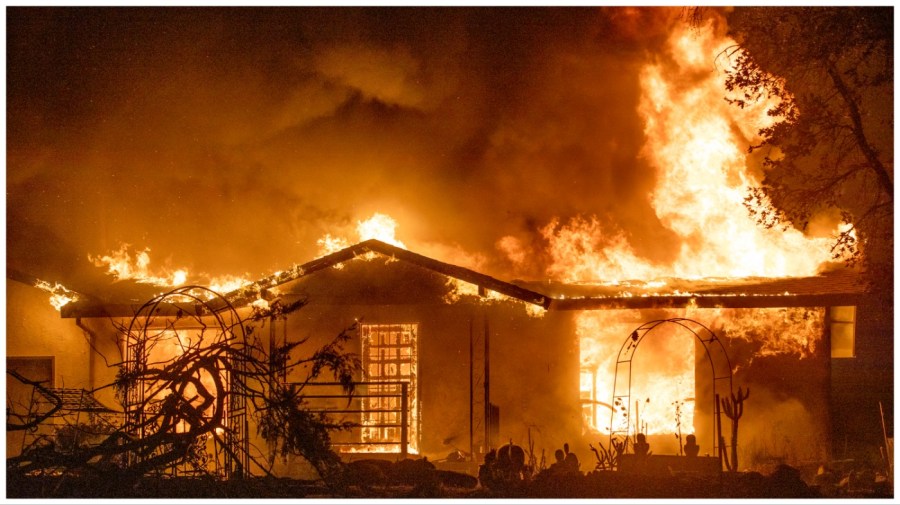
The Los Angeles fires have been devastating, and the health consequences for residents, first responders and those handling the cleanup are not yet fully understood. The smoke may be temporary, but toxic air pollution is an ever-present danger with effects that linger for generations.
Historically, the image of West Coast firefighters is battling large forest fires when mostly trees are burned. But the LA fires have created an entirely different risk; as homes and buildings burn in Los Angeles, so does the plastic inside of them. This includes insulation, flooring, vinyl siding, paint, decking and PVC pipes, just to name a few.
All of that plastic contains chemicals that become dangerous when burned and released into the air, water and soil. Residents are experiencing not only the tragedy of what is in the fire, but also the serious health effects found in the air pollution and ashes left behind.
If you’ve ever been around burning plastic, you know the acrid smell. Burning plastic releases a cocktail of chemicals associated with cancer, respiratory problems, developmental problems, birth defects, heart problems, organ damage and more.
Building and construction ranks second in the use of plastics, only behind plastic packaging. It accounts for 17 percent of total plastic production. The 1.2 million tons of plastic contained in just the carpet discarded in the U.S. each year is the same amount of plastic as every water bottle, straw and plastic bag used in the U.S. each year.
At the same time, there’s been a 761 percent increase in the number of buildings destroyed in California wildfires. These wildfires in urban areas are becoming much more common as previously less dense areas get developed and hot temperatures and drought conditions fueled by climate change get worse. With more buildings on fire comes more plastic burning.
PVC, is one of the most toxic types of plastic and also one of the most commonly used materials in building construction. When it burns — or even just gets exposed to extreme heat — it releases cancer-causing dioxins into the air.
The threat is imminent to a city’s water system as well. Water meters, pipes gaskets and storage tanks are often made from PVC plastic. Heat can cause the PVC to release chemicals like cancer-causing benzene directly into the water and air. In addition to cancer, exposure to unsafe levels of benzene can cause a decrease in white blood cells the body needs to defend itself from infectious diseases. Tap water has exceeded this level of benzene in multiple fires, and researchers have traced benzene directly to plastic pipes in a 2018 urban wildfire in California.
Firefighters are especially at a high risk of exposure to chemicals released from burning buildings, with PVC considered to be a significant issue in the field. Between 2002 and 2019, almost two out of every three firefighters who died in the line of duty died of cancer.
The damage to homes isn’t necessarily temporary. Structures that survive the fires may be uninhabitable because of chemical contamination from the burning of synthetic materials like plastic. Removing chemicals from the water system can take months and millions of dollars, and plastic pipes may continue to release those chemicals into clean drinking water over time.
There are safe alternatives to many plastic building materials. Late last year, experts at Habitable published a report with specific policy recommendations on how the building sector can transition from plastic. It starts by setting goals, banning toxic petrochemicals like vinyl chloride, defining safer alternatives, and acknowledging the cost of business as usual.
And with more of these severe wildfires expected due to extreme conditions fueled by climate change, it would be wise for building codes to require safe and sustainable building products that are not made from plastic.
Judith Enck is a former EPA regional administrator, the president of Beyond Plastics, and a professor at Bennington College.
Heather McTeer Toney is a former EPA regional administrator and the executive director of Beyond Petrochemicals.












